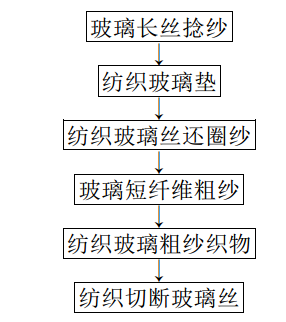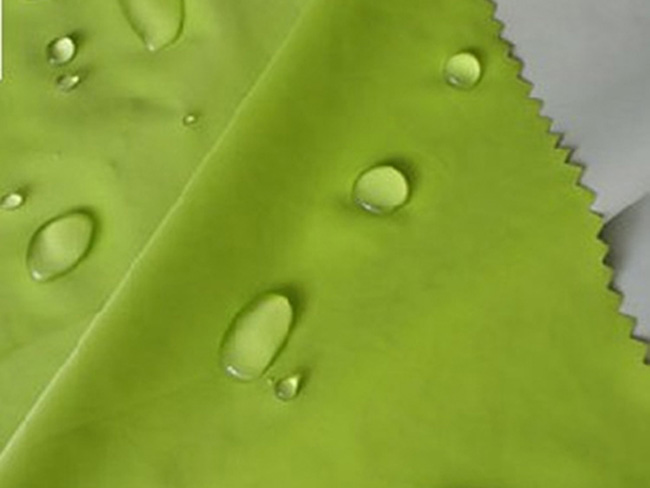Application and development of glass fiber
Introduction
Glass fiber has excellent properties and is widely used in many fields. It is an inorganic non-metallic material that can replace metal. Because of its good development prospects, major glass fiber companies are focusing on research on high performance and process optimization of glass fiber.
01.The concept of fiberglass
1.1 Definition of glass fiber
Glass fiber is an inorganic non-metallic material that can replace metal and has excellent performance. It is prepared by drawing molten glass into fiber shape through the action of external force. It has the characteristics of high strength, high modulus and low elongation. It has excellent It has heat resistance and compressibility, large thermal expansion coefficient, high melting point, its softening temperature can reach 550~750°C, good chemical stability, not easy to burn, and has certain corrosion resistance and other excellent properties, and has been widely used in many fields [1 ].
1.2 Characteristics of glass fiber
The melting point of glass fiber is 680℃, the boiling point is 1000℃, and the density is 2.4~2.7g/cm3. The tensile strength is 6.3~6.9g/d in the standard state and 5.4~5.8g/d in the wet state. Glass fiber has good heat resistance and is an advanced insulation material with good insulation properties. It is suitable for the production of thermal insulation and fireproof materials.
1.3 Composition of glass fiber
The glass used to produce fiberglass is different from the glass used in other glass products [2]. The glass used in the production of fiberglass contains the following ingredients:
(1) E-glass, also known as alkali-free glass, is borosilicate glass. Among the materials currently used to produce glass fiber, alkali-free glass has the most applications. Alkali-free glass has good insulation and mechanical properties and is mainly used to produce insulating glass fiber and high-strength glass fiber. However, alkali-free glass is not resistant to inorganic acid corrosion, so it is not suitable for use in acidic environments.
(2)C-glass, also known as medium-alkali glass. Compared with alkali-free glass, it has better chemical resistance and poor electrical and mechanical properties. Adding diboron trichloride to medium-alkali glass can produce glass fiber surface mat, which has corrosion resistance. Boron-free medium-alkali glass fibers are mainly used in the production of filter fabrics and wrapping fabrics.
(3) High-strength glass fiber. As the name suggests, high-strength glass fiber has the characteristics of high strength and high modulus. Its fiber tensile strength is 2800MPa, which is about 25% higher than the tensile strength of alkali-free glass fiber, and its elastic modulus is 86000MPa, which is higher than E-glass fiber [3]. The output of high-strength glass fiber is not high, and due to its high strength and high modulus characteristics, it is generally used in military industry, aerospace, sports equipment and other fields, and is not widely used in other fields.
(4) AR glass fiber, also known as alkali-resistant glass fiber, is an inorganic fiber. Alkali-resistant glass fiber has good alkali resistance and can resist corrosion by high-alkali substances. It has extremely high elastic modulus and impact resistance, tensile strength, and bending strength. It is also non-flammable, anti-freeze, has strong resistance to temperature and humidity changes, has good crack resistance and impermeability, strong plasticity, and is easy to form. Rib material for fiberglass reinforced concrete.
02. Preparation of glass fiber
The manufacturing process of glass fiber generally involves melting the raw materials first, and then fibrillating them. If they are to be made into the shape of glass fiber balls or fiber rods, they cannot be directly fibrillated. There are three fiberization processes for glass fiber [4]:
Wire drawing method: The main method is filament nozzle drawing method, followed by glass rod drawing method and melt drop drawing method;
Centrifugation method: drum centrifugation method, step centrifugation method and horizontal porcelain plate centrifugation method;
Blowing and spraying method: blowing and spraying method and nozzle blowing and spraying method.
The above processes can also be used in combination, such as drawing-blowing method, etc. Post-processing takes place after fiberization. The post-processing of textile glass fiber is divided into the following two major steps [4]:
(1) In the process of producing glass fiber, the glass filaments that are merged together must be sizing before winding, and the short fibers must be sprayed with lubricant before collecting and perforated drums. (2) Further processing, depending on the conditions of short glass fiber and short glass fiber roving, has the following steps:
①Glass short fiber processing steps:

②Glass short fiber roving processing steps:

03.Application of glass fiber
3.1 Application of glass fiber in the field of electrical insulation
Electrical insulation materials can be divided into 8 categories according to JB/T2197-1996 electrical insulation material product classification, and there are 6 categories related to glass fiber. This is enough to illustrate the wide application of glass fiber in this field. Category 6 materials include [5]:
(1) Insulating impregnated products: made of fiberglass cloth, casings, non-woven binding tapes, etc., which are impregnated or coated with insulating paint. They are used for wrapping insulation, interphase insulation, insulation protection and lining of motors and electrical appliances, etc.
(2) Glass fiber reinforced plastic laminates: Materials made from alkali-free glass fibers as reinforcing materials and thermosetting resins such as phenolic resin and epoxy resin as base materials. They are used in motor transformers, electrical instruments, electronic equipment, etc. Among them, copper-clad laminates for printed circuit boards are one of them.
(3)Glass fiber moldThe aerospace field brings together the most advanced scientific and technological achievements in the world today, and is also a concentrated display of the scientific and technological level of new materials. With my country’s vigorous development in this field, high-performance glass fiber composite materials have become an indispensable material in the aerospace industry. Together with the three major metal materials of aluminum alloy, steel and titanium alloy, they have become the key to supporting the development of the aerospace industry. cornerstone.

In aviation, fiberglass composite materials are used in both civilian airliners and military aircraft. Such as inner and outer ailerons, rudders and spoilers, etc. are used. Fiber-reinforced plastic effectively reduces the mass of the aircraft, increases the commercial load, and saves energy. Fiber-reinforced engineering plastics are used in the cabin’s ceiling, luggage compartment, various instrument panels, fuselage air-conditioning compartments, covers, etc., achieving the effect of being lightweight, beautiful and durable.
In the aerospace field, high-performance glass fiber composite materials are increasingly used as main load-bearing structural materials in launch vehicles and spacecraft. The fiber/epoxy composite solid engine casing manufactured by the fiber winding process is a milestone in the development history of modern composite materials. It has the properties of corrosion resistance, high temperature resistance, radiation resistance, flame retardancy, and anti-aging. The heat-proof materials on the spacecraft use a large number of fibers and high-silica-reinforced phenolic resin.
In addition, researchers chemically treated the surface of the glass fiber, effectively improving the brittleness of the glass fiber, thus producing an ultra-fine glass fiber fabric that is 7 times softer than cashmere and 14 times softer than Liang cloth. It has been successfully used in the production of space suits. In short, glass fiber material has been successfully used from my country’s Shenzhou 2 to the Shenzhou 7 manned flight.
Summary:
In recent years, with the rapid development of domestic glass fiber, my country has gradually become the world’s largest fiberglass producer, and the demand for glass is also increasing year by year. The basis for the production capacity growth of the domestic fiberglass industry is the increase in demand, which requires export sales while meeting domestic demand.





